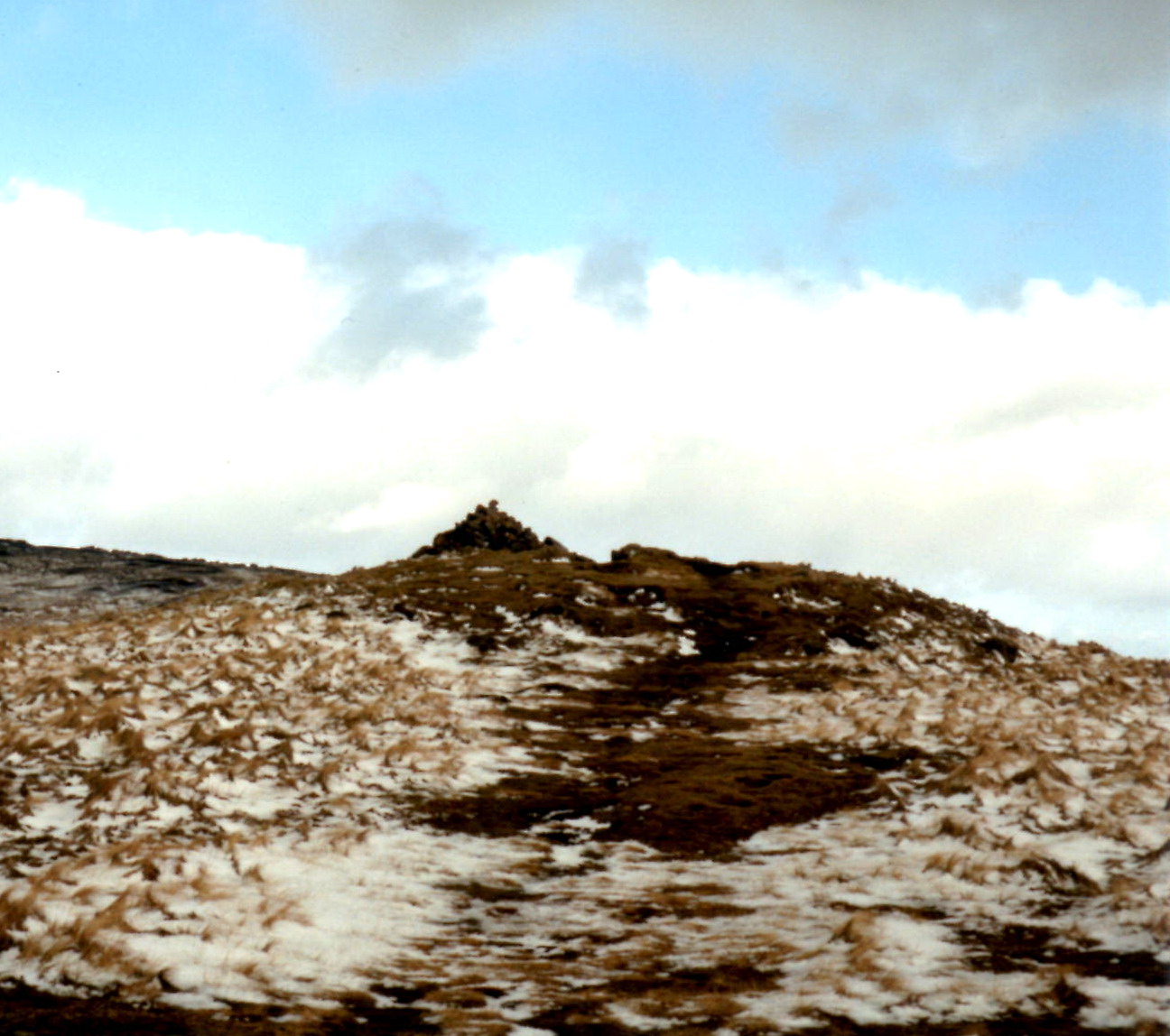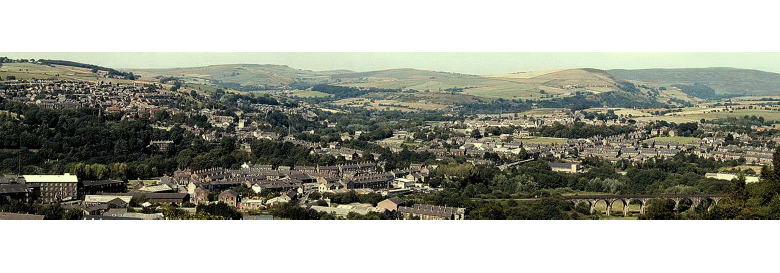| | | | |  | |  | | | |
Kinder Low Barrow (SM 23271)
 The monument is a bowl barrow situated at the summit of Kinderlow in the western gritstone moorlands of Derbyshire. It includes a steep-sided sub-circular mound measuring 17.5m by 15m and standing c.2m high. A gritstone kerb is partially visible in the north-western perimeter of the mound, consisting of contiguous, vertically-set slabs some of which lean outwards or have fallen. The monument is a bowl barrow situated at the summit of Kinderlow in the western gritstone moorlands of Derbyshire. It includes a steep-sided sub-circular mound measuring 17.5m by 15m and standing c.2m high. A gritstone kerb is partially visible in the north-western perimeter of the mound, consisting of contiguous, vertically-set slabs some of which lean outwards or have fallen.
During the 1990s, regular monitoring of Kinderlow bowl barrow highlighted the fact that the monument had begun to suffer serious erosion. The barrow was crossed by a well-used unofficial footpath which had resulted in the formation of a linear scar. There is also a walkers cairn on the barrow which appears to have been constructed from material from the monument itself.
Initial discussions regarding possible conservation works to this barrow were held with the National Trust in 2000. These involved Steve Trotter, the National Trust High Peak Estate Manager, Mark Newman, the NT regional archaeologist for the East Midlands, Ken Smith and Sarah Whiteley of the PDNPA Archaeology Service.
It was decided that the walkers cairn on the barrow should be removed, the material being used to fill the erosion scar resulting from the line of the footpath crossing the monument. The footpath would be re-routed to the south of the barrow as a stone flagged path. The turf removed from the line of the re-routed path would be used to cover the in-filled erosion scar. A measured survey of the barrow was to be undertaken in advance of the commencement of these works.
On completion of the repairs the monument would be fenced using wooden stakes and sheep net fencing, in order to allow the translocated turves to establish and to encourage walkers to use the new section of path. Interpretive material, explaining the nature of the monument, the necessity for the works and the need for the re-routing of the footpath, would be displayed from the time that the barrow was fenced off.
In August 2001 a brief for the works was produced and circulated to the relevant National Trust officers for comment . The brief was then sent to ARCUS, Sheffield University’s archaeological contracting unit, with a request for a costing for undertaking a measured survey of the barrow.
Survey work was programmed for the spring of 2002. Between January 2002 and the commencement of survey in May, various consents and agreements had to be addressed. English Nature were consulted on the project because of the work being undertaken within a SSSI/SAC area. The National Trust issued an Archaeological Licence to ARCUS to carry out the survey work, National Trust health and safety information was provided to the contractors and a risk assessment produced. ARCUS also produced a specification for the measured survey which was approved by Mark Newman (NT) and Sarah Whiteley (PDNPA).
Initially it was intended that the repairs to the barrow would be conducted soon after completion of the measured survey. Problems of sourcing stone flags followed by poor weather conditions in the Autumn of 2002, which meant that the flags could not be air lifted to the site by helicopter, delayed this process, however.
As a result of the problems described above the repairs had to be re-scheduled to May 2003. This phase of the work consisted of the laying of the flagged path, the line of which was established to the south of the monument and some 5 metres beyond the edge of the scheduled area. The line of the path was de-turfed and excavated to a depth of c. 100mm. A watching brief was undertaken by Sarah Whiteley during this process and a photographic record made.
When the path had been laid, the second stage of repair began, the removal the walkers cairn, using the stone to fill the erosion scar. A layer of sand, c. 400mm deep was initially laid in the base of the scar as a marker horizon. The stone which made up the walkers cairn was then used to fill the remaining void. Turves which had been removed when laying the flagged path were then laid on top of this infill.
The monument was then fenced out with sheep net fencing at a distance of 5m from the base of the monument. Interpretive material, explaining the nature of the monument, the necessity for the works and the need for the re-routing of the footpath, was attached to the fence.
The monument will remain fenced for the next 12 months in order to allow the re-located turves to become established. At the time of the preparation of this report there is some concern regarding the condition of the turves as the summer and early autumn has been extremely dry. This situation will be monitored by National Trust High Peak Estate staff over the coming months. No problems have been reported so far regarding walker’s respect for the repairs to the site and the new access arrangements.
 |
| | ![]() |  | |  | | | | | |
|
|









 The monument is a bowl barrow situated at the summit of Kinderlow in the western gritstone moorlands of Derbyshire. It includes a steep-sided sub-circular mound measuring 17.5m by 15m and standing c.2m high. A gritstone kerb is partially visible in the north-western perimeter of the mound, consisting of contiguous, vertically-set slabs some of which lean outwards or have fallen.
The monument is a bowl barrow situated at the summit of Kinderlow in the western gritstone moorlands of Derbyshire. It includes a steep-sided sub-circular mound measuring 17.5m by 15m and standing c.2m high. A gritstone kerb is partially visible in the north-western perimeter of the mound, consisting of contiguous, vertically-set slabs some of which lean outwards or have fallen.